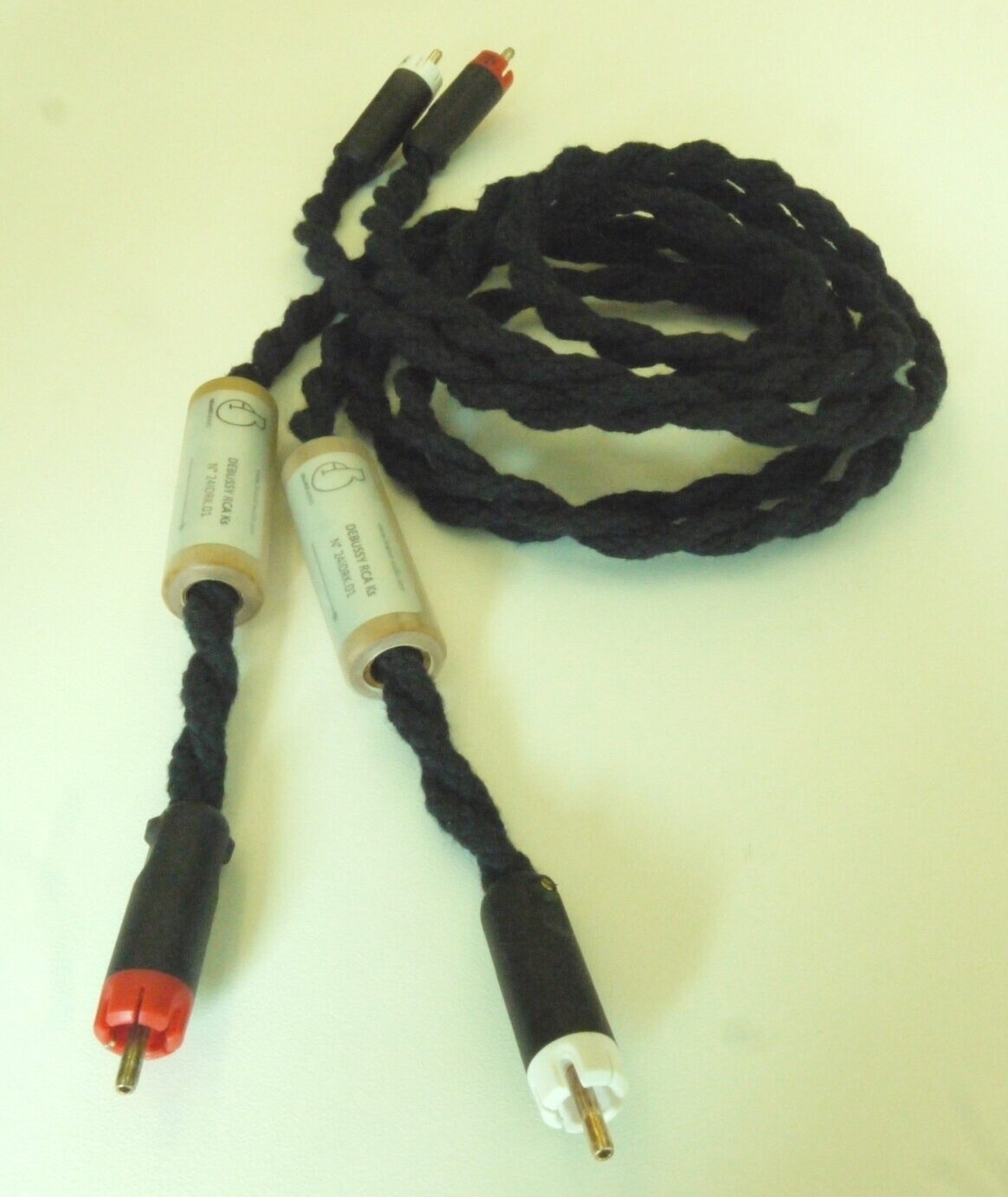Simply handling the Brandt cables leaves you in no doubt as to their background or manufacturing origin. From the cotton covering to the twisted construction and sheer flexibility, there isn’t a mass-produced cable that feels like or looks like the Brandts. Look a little deeper into the range and you soon realise that despite the artisan construction (or perhaps because of it) they also tick an awful lot of the key boxes that contribute to cable performance.
Let’s start with the conductors. Enamelled copper wires of differing diameters are wound into silk insulated, litz conductors, each with a total cross-sectional area depending on function. The key thing here is that both the conductor material and insulation/construction is consistent across all of the cables in the range, from interconnects to power cords. The finished conductors are then twisted and fed into first one and then a second, woven cotton outer. Two sets of conductors twisted together constitute a cable (three for the power cords). The construction is unshielded and also tuneable, depending on how tightly/consistently the conductors are wound – Brandt suggests that a looser wind creates a warmer and more expansive sound, at the expense of definition and focus.

The connectors have clearly been chosen with considerable care and are (with the almost unavoidable exception of the XLRs, low-mass, low metal designs). RCAs are the ubiquitous, affordable but excellent KLEI Bullet Plugs, albeit with the steel fixing screws for the plug-bodies replaced with non-magnetic brass. Neutrik or Cardas XLRs can be specified for balanced leads. Brandt Audio produces their own, heavily gold-plated direct to brass, spades and bananas. AC plugs are the highly regarded, copper pin, Viborg models. The finished cables are soft to the touch, low-mass throughout and make extensive use of natural insulators.
For review, I received the Coltrane Sensual speaker cables (fitted with Brandt bananas) 2.5m pr – 3,500CHF, Debussy RCA K interconnects (1.25m pr – 1,250CHF) and a mixture of 1.5m Bergonzi 1.8 (1,500CHF) and 3.6 (2,300CHF) power cables (the numbers referring to the cross-sectional area of the conductors used). The complete loom is voiced for neutrality with a natural sense of weight and dynamics. Brandt also offers the parallel Wagner series, derived from the internal cables developed specifically for the Stenheim Alumine 5SE, which certainly stands as a recommendation.
In use, two things swiftly become obvious about the Brandt cables: their light weight and flexibility makes them a joy to install, especially after some of the stiff, massively thick and heavy cables I’ve come across; possibly more than any other cable I’ve used – short of Odin 2 – the Brandt cables benefit from being used as a complete loom. With that in mind (and given that Brandt don’t offer a distribution block of any kind) I also ordered up a 6.0m Bergonzi 3.6 20A power cord to feed a Nordost QB8 Mk. III distribution block, whose no-nonsense, star grounded configuration proved a perfect match. A few substitutions and comparisons quickly confirmed that the full loom is the way to go – including the cable coming out of the wall. Indeed, use them any other way and you quickly erode their powerful but fragile musical qualities, a consideration that extends to the manner of their use. Cable dressing is critical, its benefits clearly audible. Raising the speaker cables off of the floor (I used CFM wood blocks) delivers an unexpected dividend – just as removing one of the risers has an immediate and obvious impact. All of which suggests that the heart of the Brandt cable’s performance lies at the micro end of the resolution and dynamic scale.

